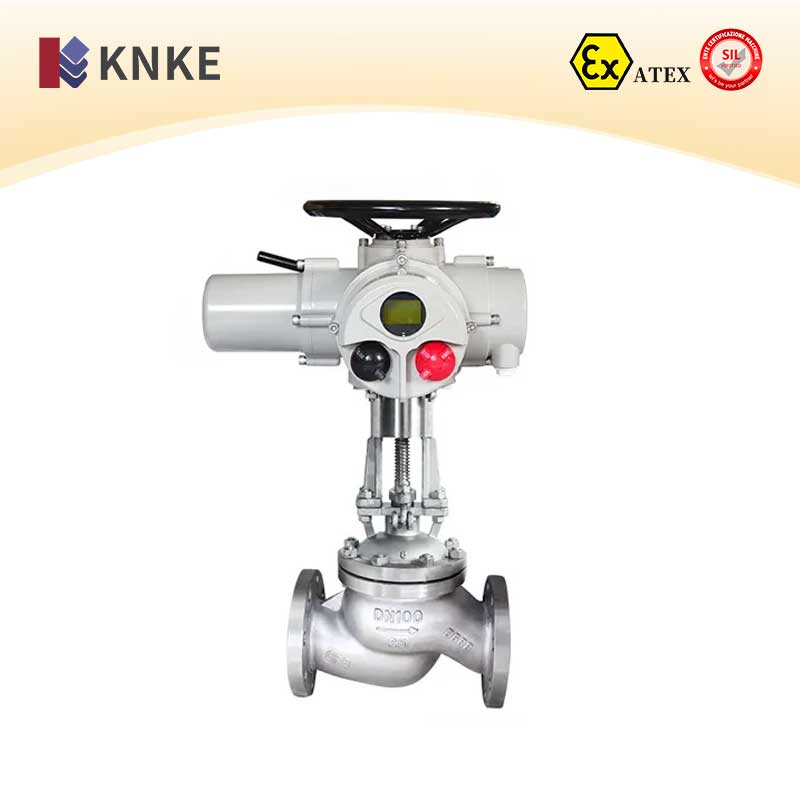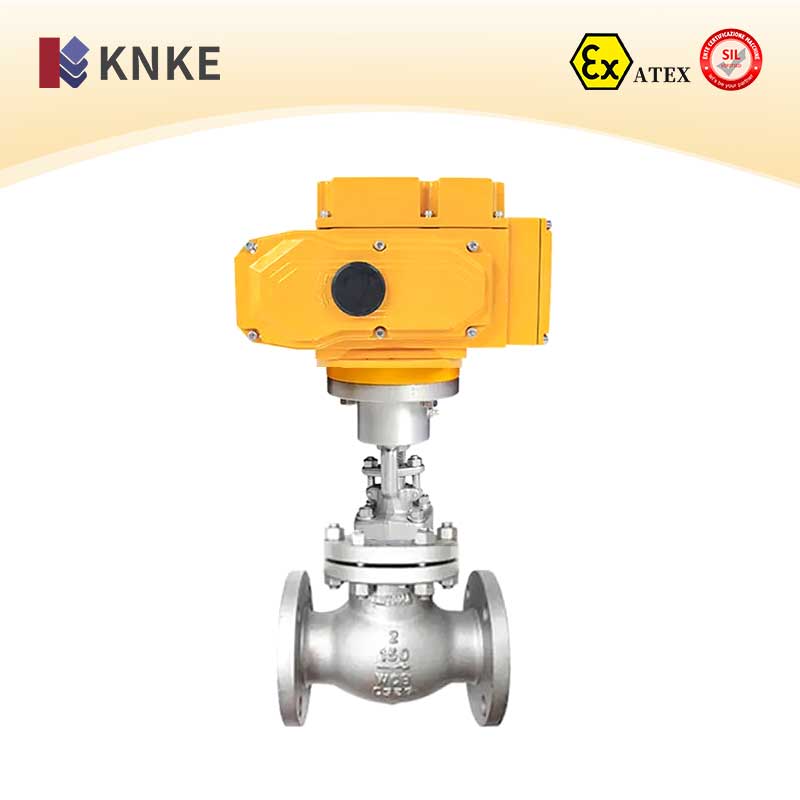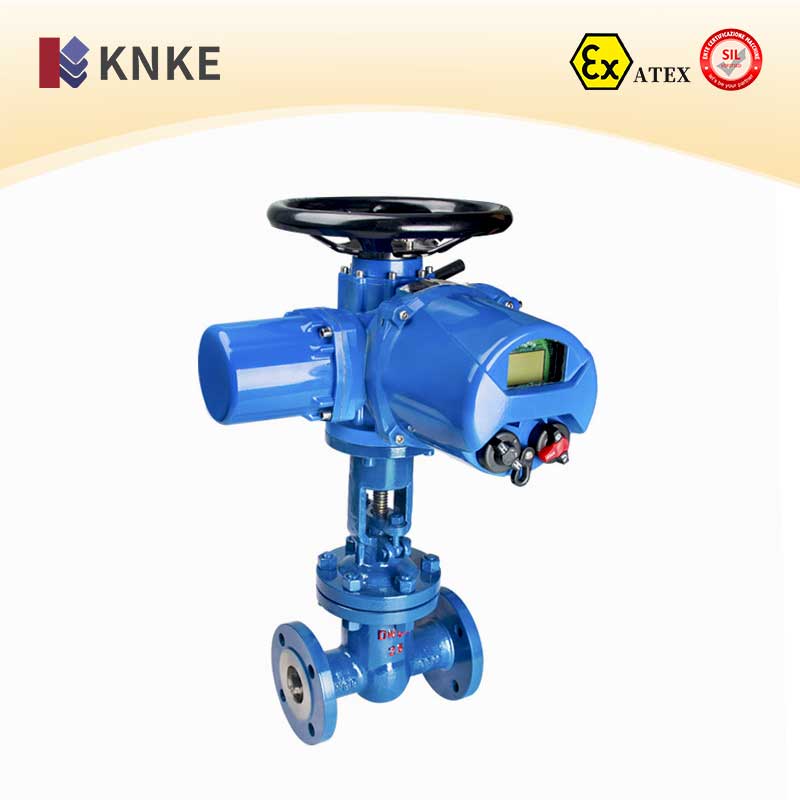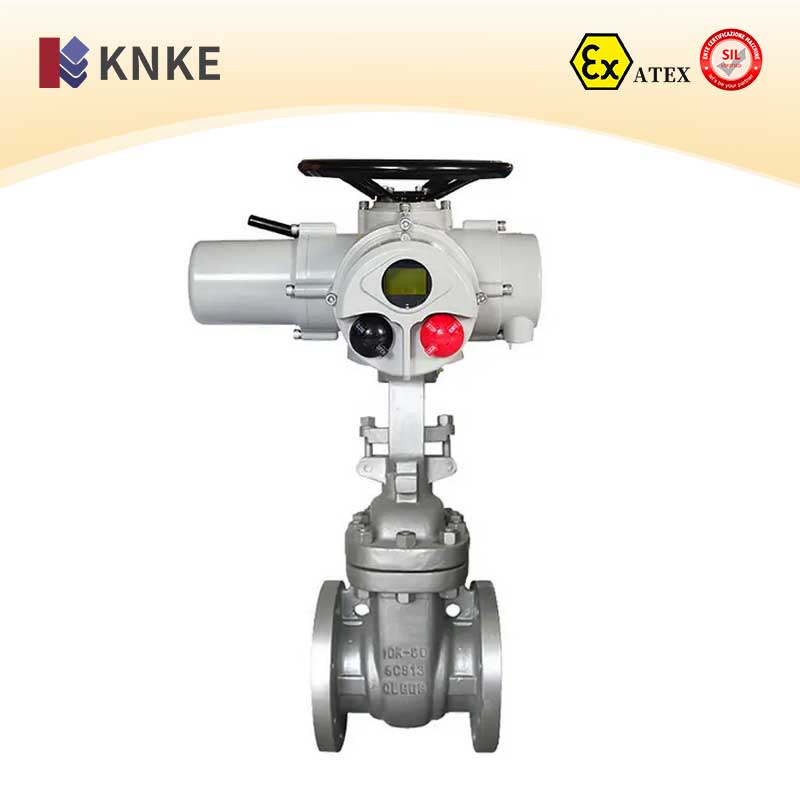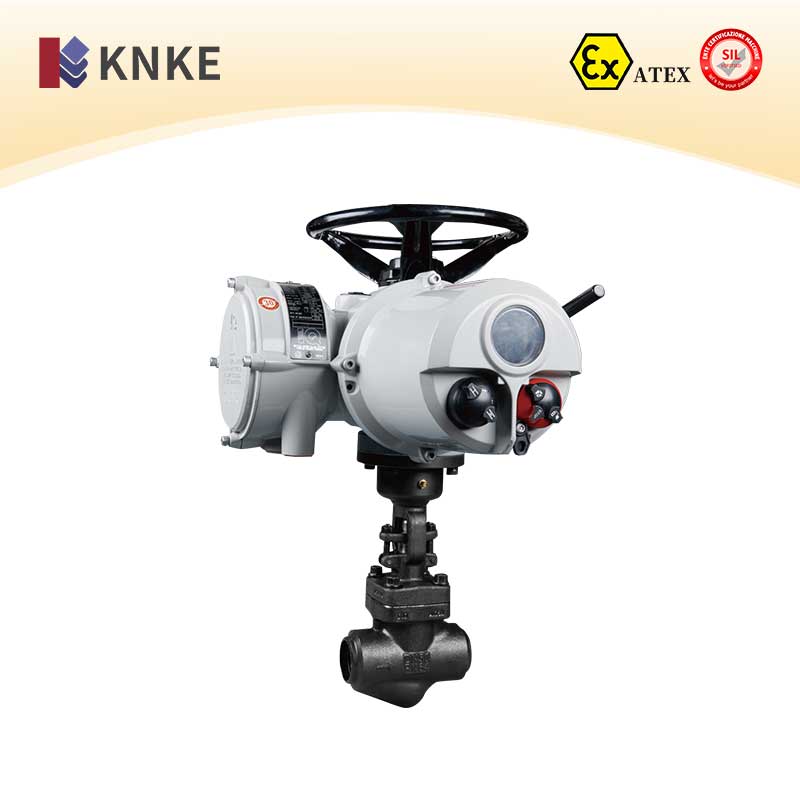Description
1. Overview of US KNKE Electric Gate Valve
The US KNKE Electric Gate Valve controls fluid flow using an electric actuator. It consists of two key components: the actuator (top section) and the gate valve (bottom section). You can adjust the speed of valve operation, offering flexibility for different needs. This simple, durable design ensures ease of maintenance and long-lasting performance. The sealing surfaces of the gate and valve seat use hard-wearing Stelita materials, welded with carbide alloys. As a result, the valve offers superior sealing, high hardness, and excellent resistance to wear and corrosion. The valve stem undergoes heat treatment and surface oxidation, enhancing its corrosion resistance, scratch resistance, and durability. The US KNKE Electric Gate Valve is ideal for industries such as petroleum, chemical, hydropower, and thermal power plants, where it controls oil, water, and steam in pipelines.
2. US KNKE Electric Gate Valve Selection Parameters
| Parameter | Description |
| Product Name | Electric Gate Valve |
| Brand Name | KNKE |
| Nominal Diameter | DN15~DN800 |
| Nominal Pressure | PN16-16.0MPa |
| Operating Temperature | ≤-29℃~550℃ |
| Body Material | Cast Steel, Stainless Steel, Titanium, Zirconium, Nickel, Hastelloy, Inconel, Monel |
| Applicable Media | Water, Oil, Steam, Acid, Alkali, Ammonia, Urea, Sulfur-containing Natural Gas |
| Valve Type | Gate |
| Connection Type | Flange, Welding, Butt Weld |
| Drive Type | Manual, Gear, Electric |
| Standards | GB (National Standard), DIN (German), API (American), ANSI |
3. US KNKE Electric Gate Valve Description
The Electric Gate Valve combines an electric actuator and a gate valve. The electric actuator drives the valve, controlling its opening, closing, and regulation. This mechanism is ideal for automated systems that require precise control. You can install it in both horizontal and vertical pipelines for optimal performance. Electric gate valves are of two types:
- Quarter-turn electric valves rotate up to 90 degrees to control fluid flow.
- Linear electric valves use a linear actuator to control the up-and-down movement of the gate.
Both types deliver accurate control, ensuring efficient fluid regulation in high-automation systems.
4. Key Features of US KNKE Electric Gate Valve
- Reliable Sealing: The valve uses a pressure-tight sealing system or gasket to ensure reliable and safe operation.
- Durable Components: The valve disc uses cobalt-chromium-tungsten hard alloys, which enhance hardness, wear resistance, and service life.
- Corrosion-Resistant Stem: The nitrided steel stem offers excellent corrosion resistance, scratch resistance, and longevity.
- Flexible Control: The valve features a torque control mechanism for local or remote operation, allowing you to control it via PLC or 4-20mA signals.
- Versatile Installation: Install the valve in any pipeline position. Based on the medium and temperature, choose between carbon steel or alloy steel.
5. Installation and Usage Notes for US KNKE Electric Gate Valve
- Installation Position: Install the valve in horizontal or vertical pipelines. For larger valves, install a bypass valve to reduce the opening torque.
- Connection Type: Flanged connections are standard, but welded connections may be used in certain situations.
- Limitations on Flow Control: Gate valves are designed for on/off control, not for regulating flow over time. Using them for flow control could damage the sealing surfaces.
- Temperature and Pressure Considerations: Extreme temperatures and pressures can cause valve seizing or sealing problems, especially if the temperature distribution is uneven.
6. Product Applications
The US KNKE Electric Gate Valve serves various industries, including:
- Oil Industry: Controls oil flow in pipelines, ensuring stable operations.
- Chemical Industry: Manages corrosive substances like acids, alkalis, ammonia, and chemicals.
- Hydropower and Thermal Power: Regulates water and steam flow in power plants.
- Water Treatment: Controls flow in wastewater treatment facilities.
- Natural Gas Pipelines: Safely transports natural gas by regulating flow.

